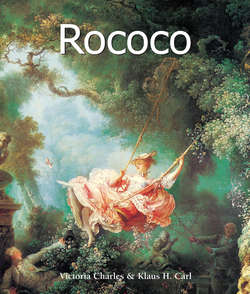Читать книгу Rococo - Victoria Charles - Страница 5
На сайте Литреса книга снята с продажи.
Contemporary History
Inventions
ОглавлениеIn the sphere of inventions introduced to accelerate productivity, the English were supremely outstanding. For example, two years after the end of the Seven Years War, the first working steam engine, later developed by James Watt (1736–1819), heralded the start of the age of mechanisation. The “Spinning Jenny”, a spinning machine, was developed in 1764, probably by James Hargreaves (1720–1778), Henry Cavendish (1731–1810) and Joseph Priestly (1733–1804), all of whom were concerned with physics in general and with electricity and chemistry in particular. It is in fact Priestley who is regarded not only (erroneously) as the inventor of the rubber eraser, but also was the first to isolate the element oxygen in 1774.
Étienne-Maurice Falconet, Monument to Peter the Great, also known as The Bronze Horseman, 1767–1778.
Bronze.
Senate Square, St. Petersburg.
Jean-Marc Nattier, The Battle of Lesnaya, 1717.
Oil on canvas, 90 × 112 cm.
The Pushkin State Museum of Fine Arts, Moscow.
Antoine Watteau, The Pilgrimage to the Island of Cythera, 1717.
Oil on canvas, 129 × 194 cm.
Musée du Louvre, Paris.
Carle van Loo (Charles-André van Loo), Spanish Concert, 1754.
Oil on canvas, 164 × 129 cm.
The State Hermitage Museum, St. Petersburg.
Pietro Longhi, The Rhinoceros, 1751.
Oil on canvas, 62 × 50 cm.
Ca’ Rezzonico, Venice.
In medicine, John Hunter (1728–1793) made a decisive breakthrough in the treatment of gunshot wounds, so that affected parts of the body no longer had to be immediately and extremely painfully amputated. The patient still had to be held down by a row of strong men and provided with copious amounts of alcohol, but the number of injured men condemned to live out their lives on a pension, receiving charity or alms, decreased considerably.
Icarus’s dream of flight became a reality for the first time with the invention of the hot air balloon in 1783. Constructed from a lined, linen cover by the brothers Joseph-Michel (1740–1810) and Jacques-Étienne Montgolfier (1745–1799), the first hot air balloon flew over two kilometres at a height of about 2000 metres and then landed in a field. Simultaneously, Jacques Charles (1746–1823) developed his gas balloon, which set off from the Champs de Mars near Paris and landed in a field near today’s Charles de Gaulle Airport, whereupon the farm hands working there, utterly nonplussed, set upon it with pitch forks. In conclusion, the 18th century was shaped by genius, war and invention.
